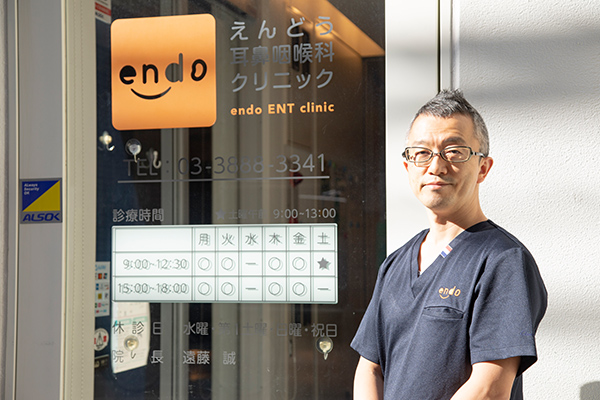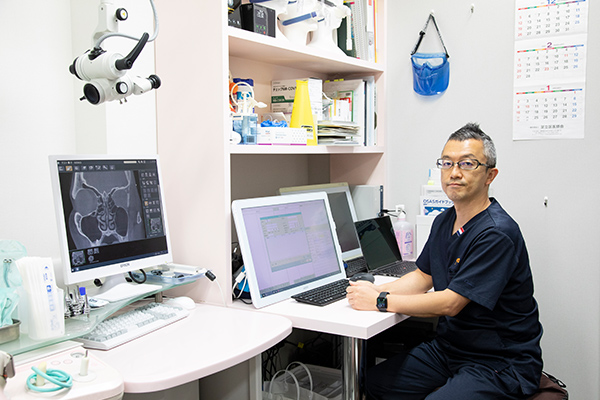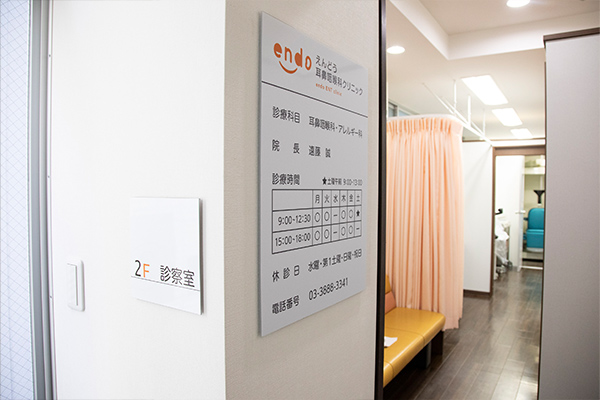- TOP
- For Doctor
- Electronic Medical Record: Doctor’s Report
- Endo Otolaryngology Clinic

Endo Otolaryngology Clinic
Interviewee: Dr. Makoto EndoAdachi-ku, Tokyo /Otolaryngology
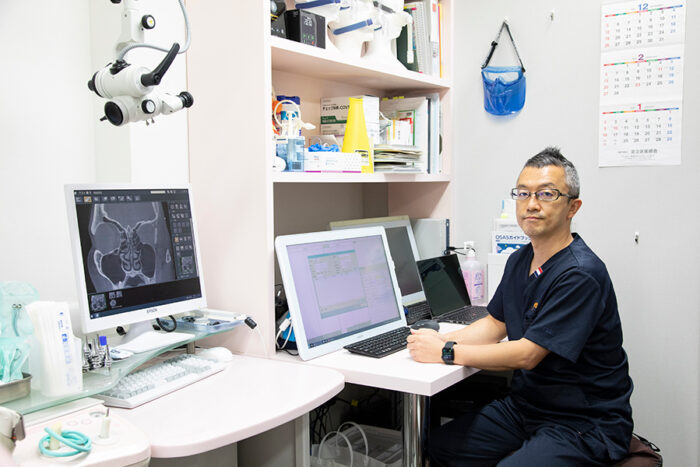
Faster and More Efficient Medical Treatment. The Ability to Quickly Resolve Problems with a Full Support System.
Endo Otolaryngology Clinic replaced the electronic medical record system of another company with our BrainBoxVIII—introducing web-based medical interviews and CT equipment in order to always provide the best medical care for their patients.
We asked Dr. Endo, the director of the clinic, about how they found our support when replacing their former electronic medical record and the changes he has seen since the introduction of the new system.
※At the time, you implemented BrainBox VⅢ, but have since upgraded to BrainBox V-Ⅳ with the opportunity of a system replacement.
Please give us an overview of your clinic. Approximately how many patients do you see each day?
Throughout the year, we examine roughly 80 people per day, but at its highest, this can be up to 130 patients a day. The number of patients in the otolaryngology department varies depending on the season, but since some patients are chronically ill regardless, I think that the number doesn’t change much from season to season compared to other clinics.
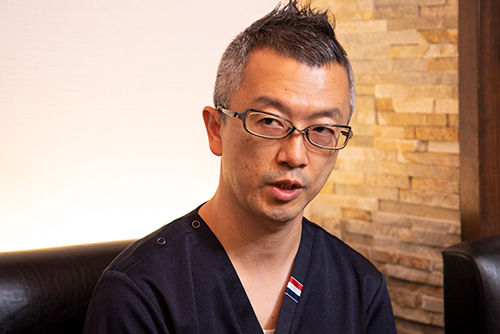
When I took a look around the clinic, I noticed a baby stroller storage area, diaper changing beds in the restrooms, and an elevator, which gave me the feeling that you are very attentive to patients with children. Do you see many of those?
We see quite a few, actually. Children are the most common patients who catch colds. Regardless of season, the infection will spread from your child and to adults. Many patients will continue to see a pediatrician and an otolaryngologist, and come to our clinic after being referred.
There must be a number of patients with children who are concerned about waiting time, so the web-based interview is a great way to answer questions in the comfort of their own home without being rushed. Has the linkage between the web-based medical interview and the electronic medical record (BrainBoxVIII) changed compared to what you were using before?
The flow of the consultation has changed considerably. In the past, mothers were so preoccupied with holding their children, it was difficult for them to cover what they wanted to discuss, but with the introduction of the web-based medical interview, they can now provide their questions in advance from home where it’s calmer, so there’s no need to rush. Aside from that, thanks to the linkage between the web interview and the electronic medical record, medical examinations have become much smoother. We have a CT scanner, and the linkage with that has also been free of issues.
(I was surprised that we are not charged for the web interview and its linkage to the electronic medical record.)
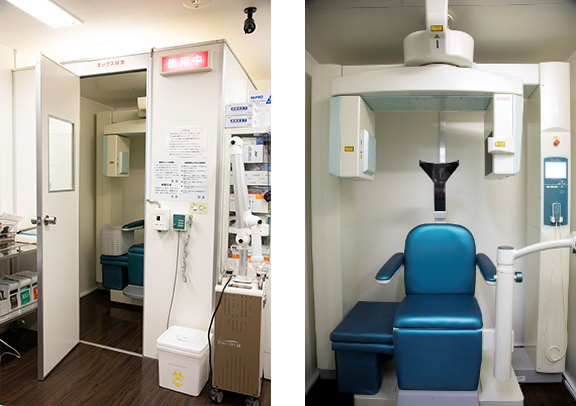
You were using another manufacturer’s electronic medical record at first, before switching to our BrainBoxVIII. Was it a difficult transition?
It’s not as if the switchover was completely painless, but Yuyama did spend a great deal of time looking at not only their product, but also how the information we had entered into the electronic medical record we were using before could be preserved, as well as its messy wiring. Your team was also very helpful in answering any questions we had, and their ability to do so was fascinating.
How was our support during the switchover?
The instructor was very helpful. Switching over to electronic medical records requires the cooperation of all our staff and those who had been working here for a long time were very resistant to new things. Even then, the instructor spent hours throughout the day carefully and meticulously showing them how to operate the system.
They also helped us customize it in various ways. We’re helping patients with sleep apnea at our clinic, for example, and when we consulted with our contact at Yuyama about how to make that work, they prepared the entire format and incorporated it into the electronic medical record for us. It was very encouraging to know that this was almost a tailor-made product and not something prefabricated.
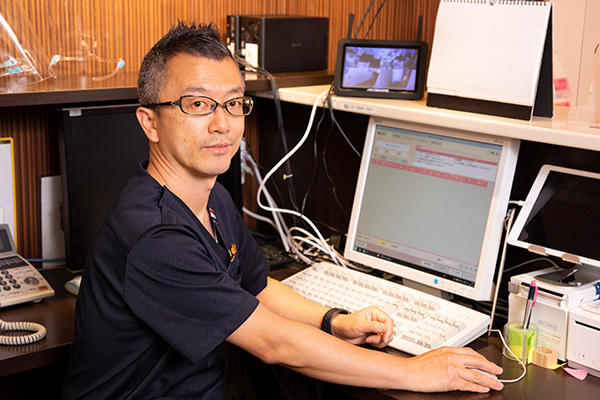
What was the most important factor in your decision to choose us?
If I had to name one thing, it would be the speediness of the electronic medical record. We were looking for speed anyway, and Yuyama seemed to have the one that fit the bill. We were able to reduce not only waiting time for patients, but also consultation time. Not only that but, as we found out after using the system, the staff operations became less complicated, and the receipt process became smoother and faster (i.e., less time consuming). I call it the “speed chart.” I wanted to spend more time carefully explaining patients’ conditions rather than spending it on the medical record, and I think Yuyama’s product answers our problem.
How do you feel when you actually use it?
I think it’s great. I had a lot of problems with my previous medical records, such as with things I didn’t understand and couldn’t solve by asking questions to the manufacturer, the computer freezing, or the settings reverting to default with every software revision or update. Meanwhile, Yuyama’s electronic medical records are smooth and easy to use. And while speed was certainly an important consideration, we also wanted to eliminate the support aspect that had previously frustrated us before we made the switch. There are things that I don’t understand or have trouble with that come up during my medical treatment and all the people at the support center are kind, immediately understand what we are having trouble with, and answer our questions. Above all, the answers are extremely easy to understand! I think all our staff are satisfied with this, myself included, which is why I would really recommend them. Troubles are bound to occur, so it’s really important to have a good support system.
Yuyama doesn’t just work hard helping us get set up, but also provides support afterwards. When a new staff member joins, Yuyama offers to arrange an instructor to help show them the ropes, which is amazing!

What are your thoughts on its functionality?
What was especially nice was the ability to input children’s medications, converting them according to their weight and age, and also in a way I am accustomed to. It was so easy to convert their medications without having to think too hard on it. It’s easy to create a set of prescriptions, and the “shortcut key function” enables one-click charting which is also helpful. I like that this comes standard with the proper features required to speed up medical record entry. It’s so easy to use, so it makes sense that it would be included as standard, since it’s usually the same thing that everyone gets stuck with.
The system also comes with check functions for medical treatment and receipts, so there is no need for extra software, just Yuyama’s electronic medical record! The cost is very reasonable.
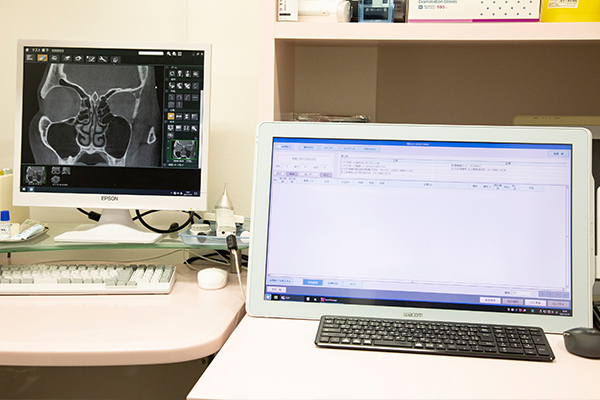
Is the Mdbank medical database MDbank, that comes standard with BrainBoxVIII, also helping you during your examinations?
When a patient forgets their medication book and isn’t able to tell us what medications they’re currently taking, but remembers its characteristics, such as color and efficacy, then we can show them a picture using the MDbank to jog their memory, which is helpful. Having other quantified data like possible side effects is also useful so that we can quickly communicate these things to patients.
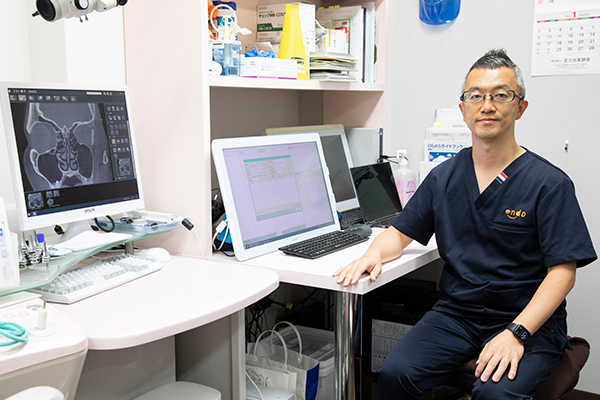
Are there any features that you would like to see in the future?
Maybe an electronic medical record that uses AI? For example, when I input information, it’ll predict the prescriptions, tests, etc., and even the name of the disease to some extent. I think it’s AI in the end that would make the best use of the advantages of digitization. Yuyama’s electronic medical records are extremely speedy, so if AI can be added to the system, the time required for inputting data would be even shorter, and if it can even make predictions then it would be a godsend.
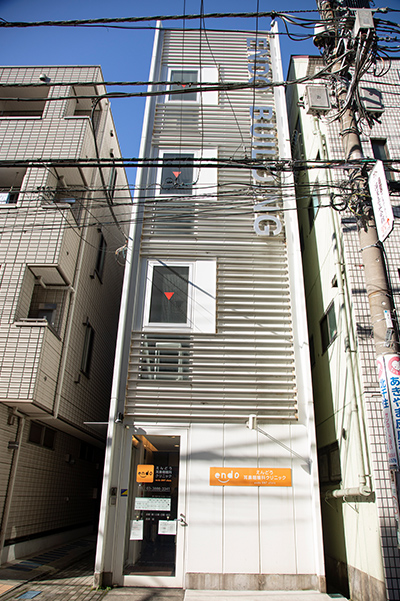
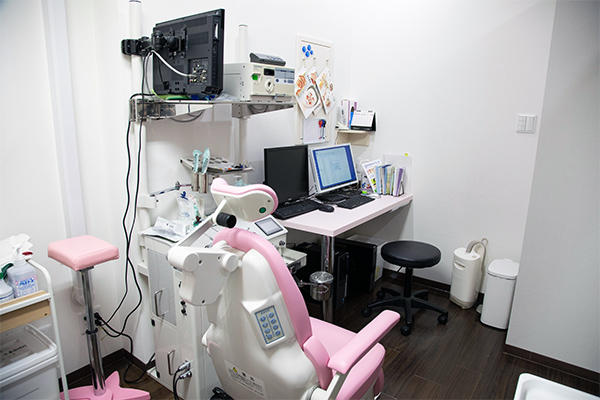
Clinic Profile
Located just a 3-minute walk from the west exit of Kita-Senju Station in Adachi-ku, Tokyo, the clinic is visited by a wide range of patients from children to the elderly. The clinic is equipped with many patient-centered facilities, such as a CT for otorhinolaryngology that allows patients to take pictures while seated, an aroma diffuser to provide a sense of quality to the space, and ultraviolet lamps to prevent infection, etc. Listening to his answers, we could really feel his belief in providing better medical care.
Information as of 2019
